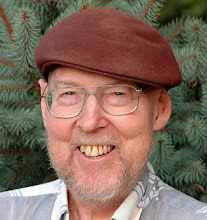| Teach your children well 7 Paths #102, February 15, 2007 |
| Occasionally I wonder how 7 Paths e-letter readers apply what they learn in their work. I caught a glimpse recently in a conversation with Heather Munn. Heather created a program, Teach Your Child, to address this issue. She set up a class to teach four mothers how to teach their children to read. Wisdom for the week: Use smart and friendly systems to produce your treasure. |
Saturday, April 07, 2007
Teach your children well
No need for another book on leadership
| No need for another book on leadership, 7 Paths #101, February 1, 2007 |
| “This world does not need another leadership book,” I thought in the fall of 2005 after an hour of browsing through the management and leadership sections of a major bookstore chain. In June 2006 Stephanie Grimes, the president of Evergreen Leaders, and I went to a two day workshop of Stephen Covey’s 7 Habits of Highly Effective People. Covey studied success literature and through his research he identified 7 habits of effective people and also the principles, paradigms, behaviors and results linked with each habit. Wisdom for the week: When organizational life is tangled, complex and frustrating, you need a path or seven. |
The delicate balance of power and tall grass prairie
| The delicate balance of power and tall grass prairie, 7 Paths #100, January 18, 2007 |
| Leading a nonprofit organization is a delicate balance of personalities and performance, values and vulnerability, commitment and creativity, power and humility. McOmie’s installation seemed to me to be a perfect metaphor for leading a nonprofit. McComia created a work of art out of an abandoned chicken coop, dried weeds, fallen branches, and broken bits of wood. Nonprofits often work with people who have been abandoned, neglected, and are on the margins of society. Wisdom for the week: Humble hierarchy leaders create space and balance in which the unlikeliest of folks thrive. |
2007 in your memoir
| 2007 in your memoir, 7 Paths #99, January 4, 2007 |
| As we begin 2007 I think about Doris Haddock, otherwise known as Granny D, who on January 1, 1999, at the age of 89, starting in Pasadena, California, began a walk across America in support of campaign finance reform. A couple years ago my daughter Hannah gave me a copy of the memoir that Doris wrote after her walk, Granny D: Walking across America in my 90th Year. I read it and was deeply moved. Wisdom for the week: Humble hierarchy leaders believe that powerlessness can be overcome by persistence. |

